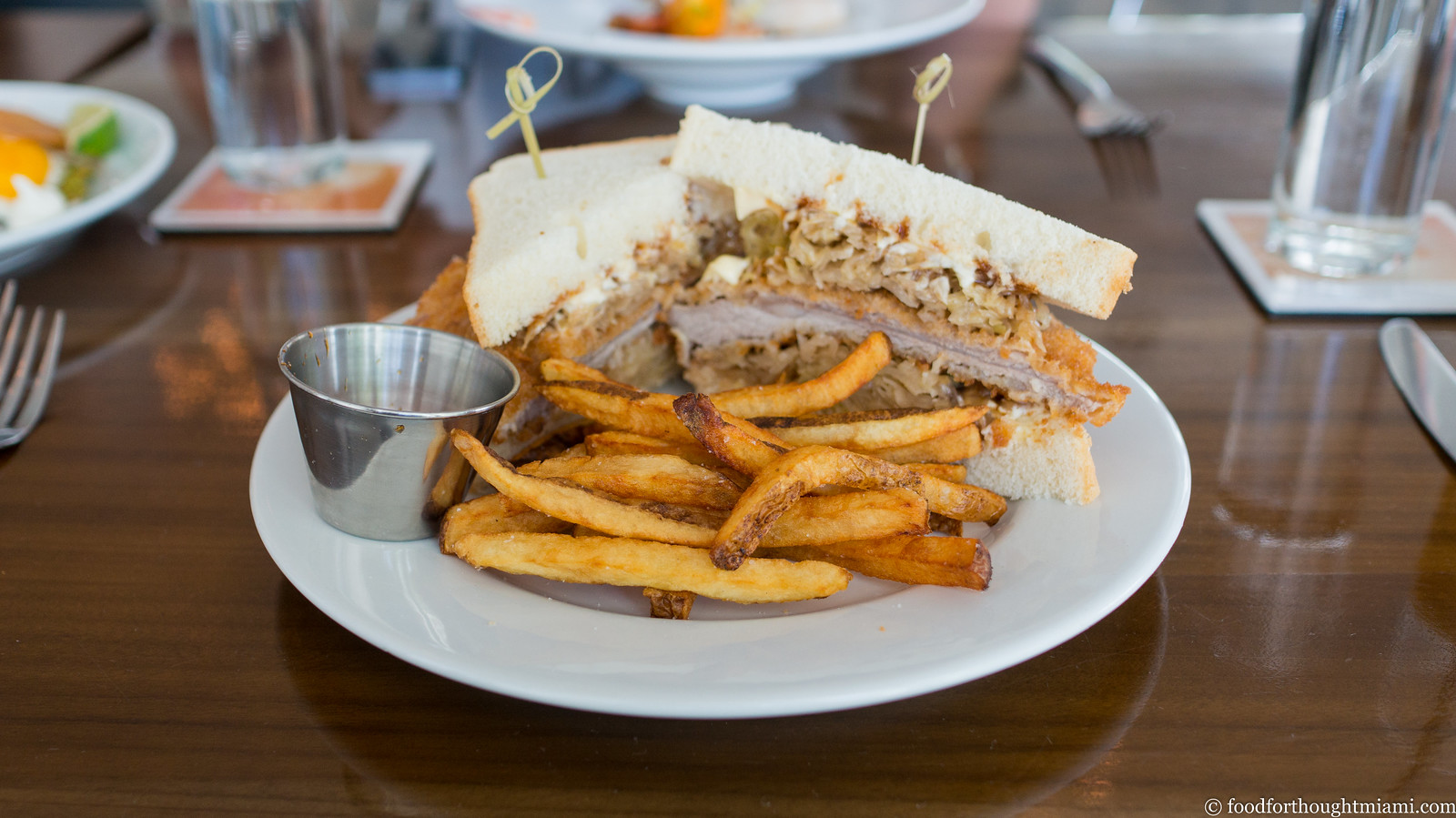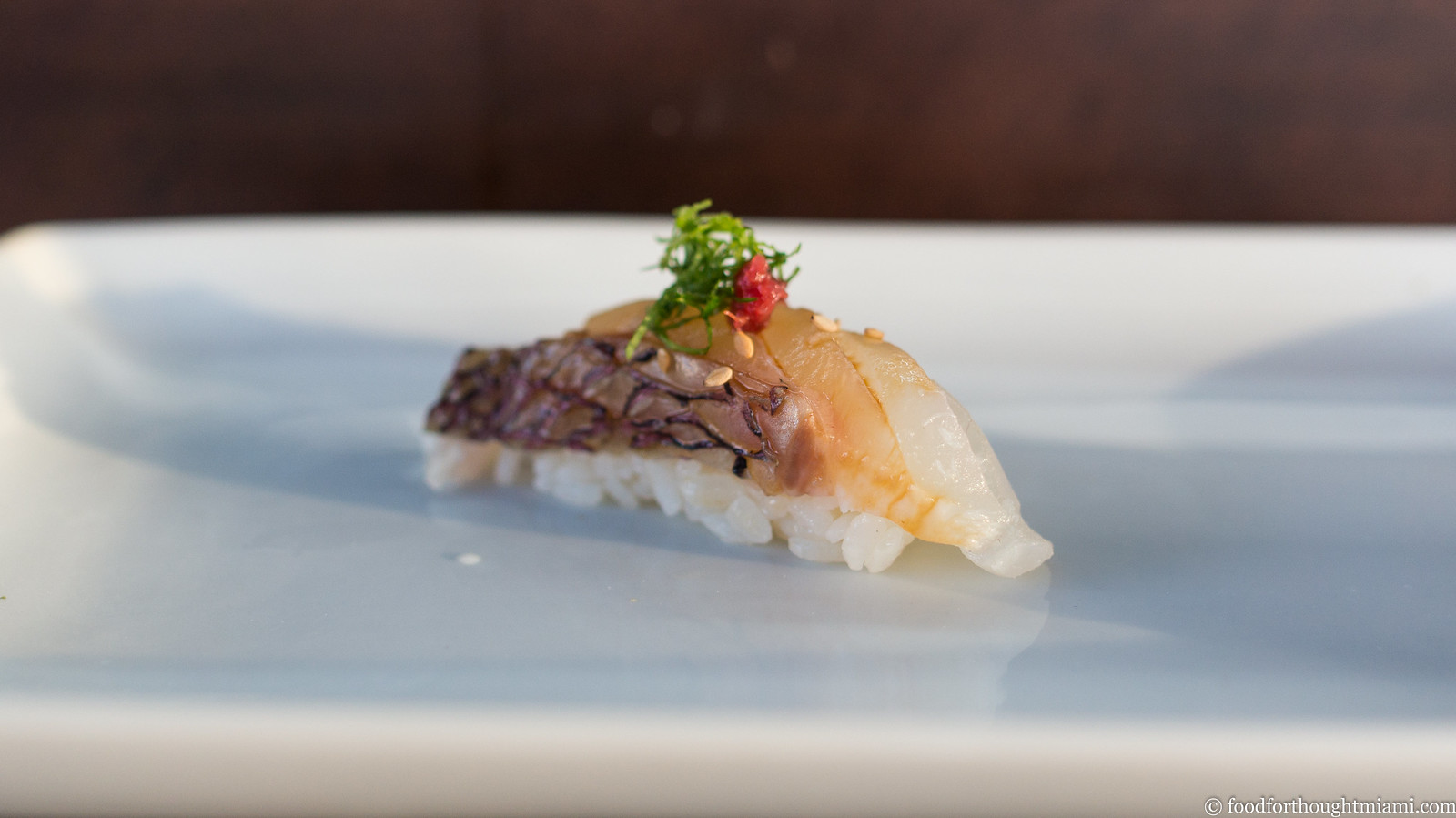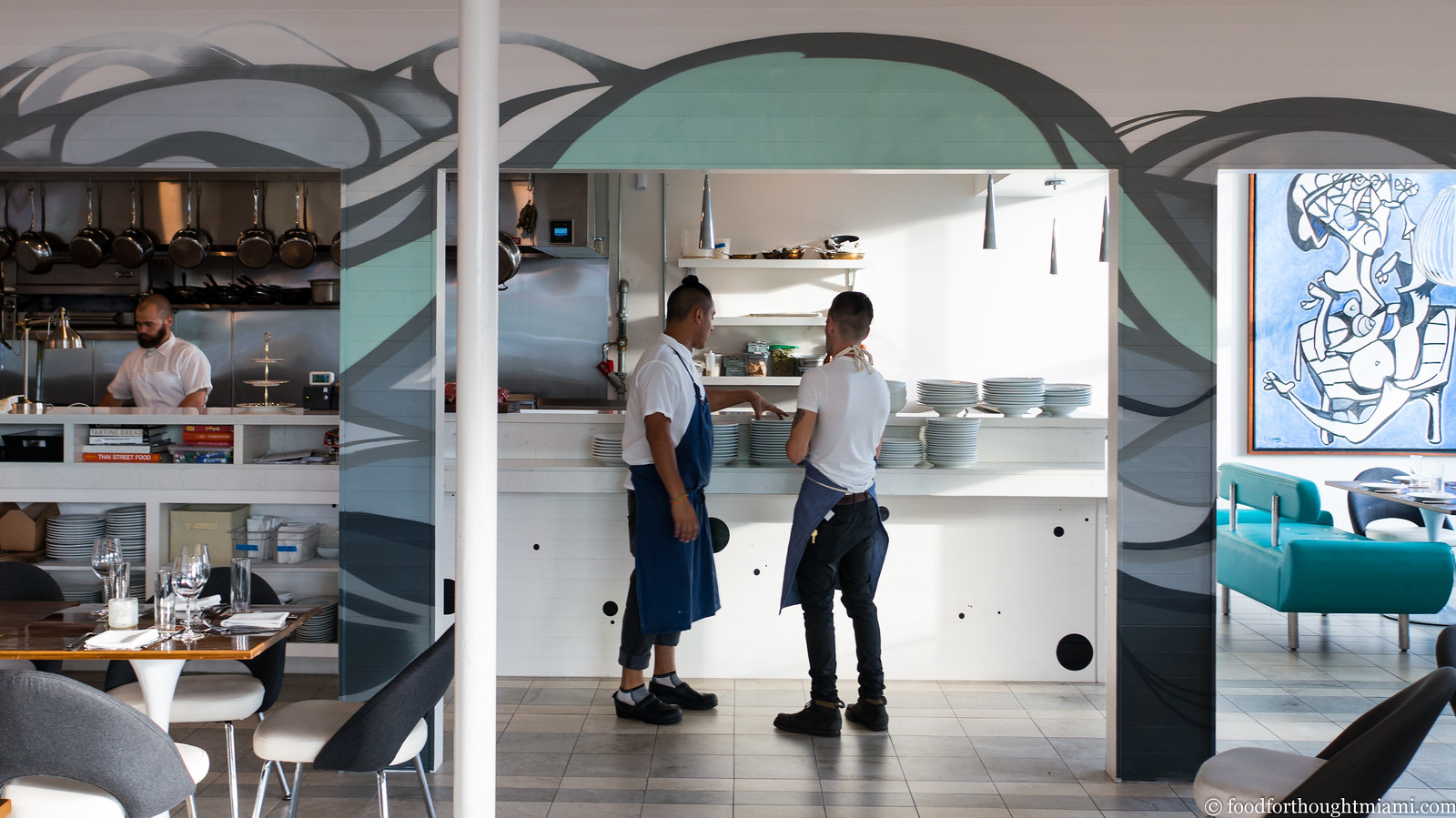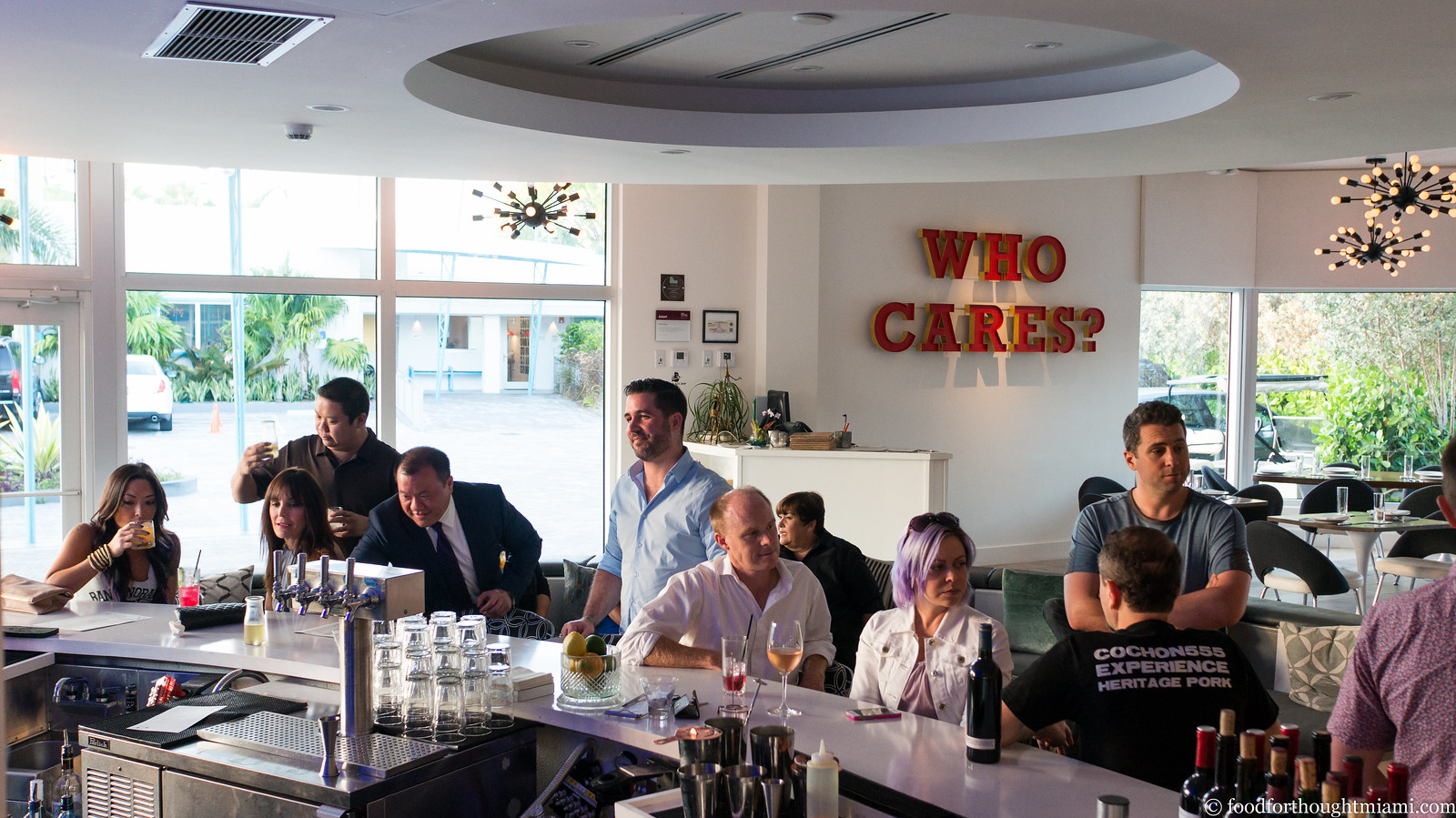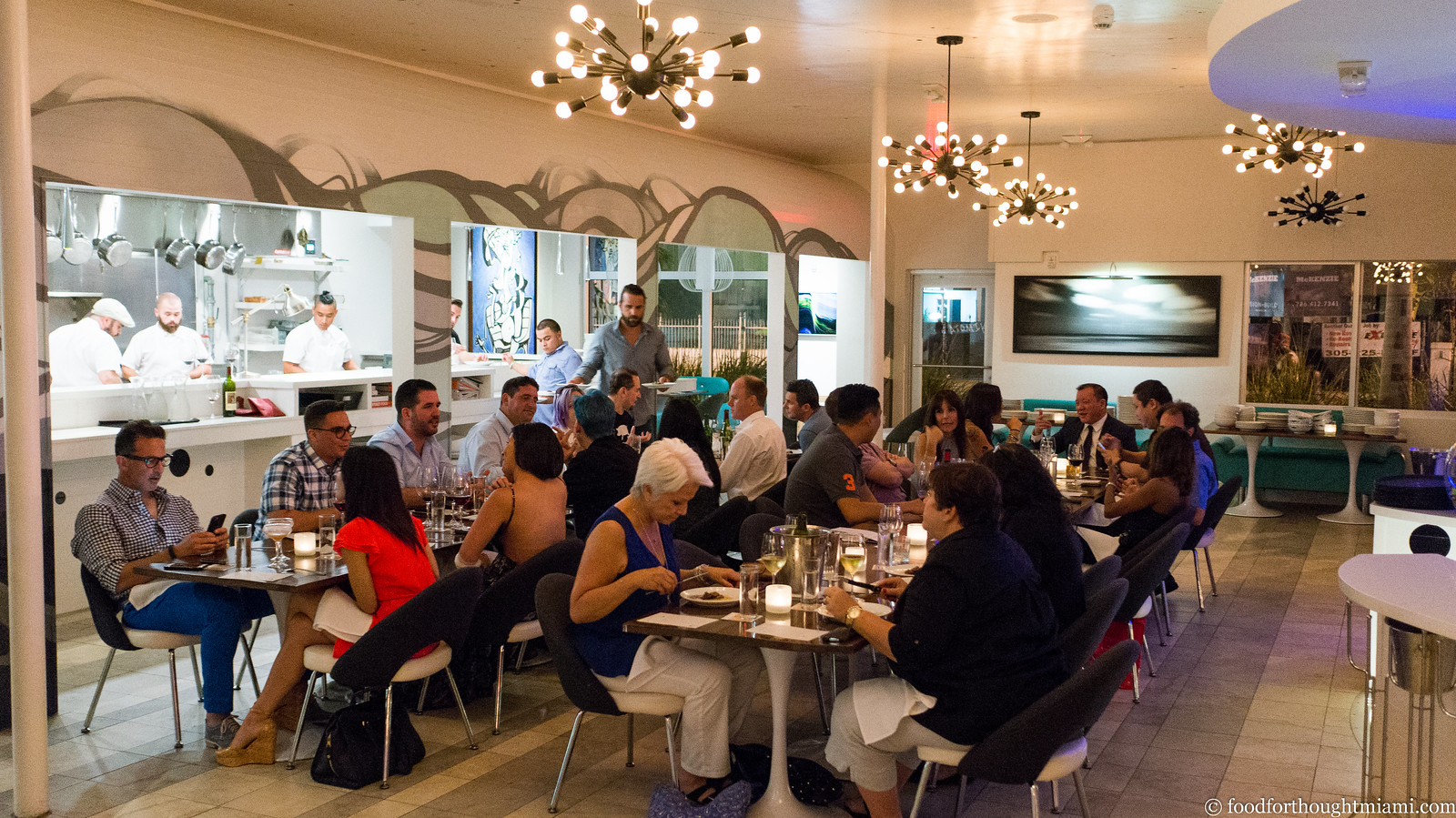In the interest of encouraging myself to post more frequently, I'm trying something new, and simple: the "best thing I ate last week." There were a couple other contenders, but this week, it was the pork tonkatsu sandwich at Vagabond Restaurant and Bar.
It starts with a panko-breaded and fried pork cutlet in the Japanese style (most people think of sushi when they think of Japanese food, but they are also expert fryers, and not just with tempura; I'm coming around to the opinion that the Japanese just do everything better). The pork is nestled between layers of sauerkraut brightened with the citrus-chile sting of yuzu kosho. It's all squeezed between fat slices of Japanese-style milk bread (see?) that's softer and whiter than Brian Scalabrine, spread with a little spicy mustard for some extra zing, the edges of the cutlet flopping off the sides.
There's a lot going on here: Is it a Japanese-style Indiana pork tenderloin Reuben sandwich? I don't know. But it was the best thing I ate last week.
This was originally a brunch-only item at the Vagabond, but you can also now find it at their lunch service which started a couple weeks ago (Tue-Fri 11:30am - 2:30pm).
Runner up: the somewhat unorthodox, but delicious, arroz con pollo at the Matador Room.
Vagabond Restaurant
7301 Biscayne Boulevard, Miami
786.409.5635
Monday, June 8, 2015
Monday, June 1, 2015
first thoughts: Myumi Omakase Sushi Truck - Miami (Wynwood)
For a long time, I've been bemoaning the dearth of good sushi in Miami. I'm not even talking about in comparison to what I had in Japan; just good quality fish and properly prepared rice is frustratingly difficult to find.
On the very high end there is Naoe, but it requires a commitment of at least a couple hundred bucks and a few hours. I'm also a fan of Makoto in Bal Harbour, but it's become a difficult reservation many days. I've actually got an excellent little spot in my neighborhood, but it's so small, its hours are so limited, and it's become so popular that it is now the Sushi Bar That Shall Not Be Named.
Then what? I had a good meal when I went omakase at Morimoto (pictures here), but the sushi wasn't really the highlight. A few years ago I made a return to Nobu after several years away and the sushi was reasonably good, but the value was entirely out of whack, as has always been the case there. I was actually pleasantly surprised by my first visit to the recently opened Soho Bay (pictures here), a Brazilian import that poached a Nobu alum, Ricardo Sauri, for its executive chef. I'll have to go back and try more.
What else? I'm not nearly as enamored of Matsuri as some folks are. I've got a couple izakayas I love – Hiro's Yakko-San and Su Shin – that serve sushi, but it's not their strong suit.[1] I'll go to Pubbelly Sushi for their reimagined Japanese gastropub stuff – a good rendition of tuna poke, the hamachi ceviche with tostones, the ridiculous but delicious pork belly and clam roll – but it's also not a place to go to for traditional nigiri. Everything else I've tried is crap.
Enter Myumi. It's not your typical sushi bar. In fact, it's a truck – a converted FedEx delivery truck, currently stationed in a lot in Wynwood. Which I suppose makes a bit of sense: I've read that sushi was originally street food. From that truck, Chef Ryo Kato[2] serves an omakase only (chef's choice) menu with only two choices: do you want to spend $40 or $60?
The omakase-only format means they know exactly what they need to buy, so they buy some very good stuff: fish and shellfish straight in from Japan, uni and ikura from Alaska, tuna from Ecuador. Some items get just a brush of shoyu, others more elaborate garnishes. Our $60, 12-course selection went like this:
(You can see all my pictures in this Myumi - Miami (Wynwood) flickr set).
(continued ...)
Friday, May 22, 2015
Cobaya Chang at the Vagabond
When I wrote about Chef Alex Chang's work at the recently opened Vagabond Restaurant, I referred to what I call the "Rob Deer School of Cooking:" go for the home run, don't be afraid to strike out. Not every dish I've had there was perfect, but none have failed for lack of ambition. With his willingness to take risks, his creative approach to using the local bounty, and his backstory (he ran an underground supper club in Los Angeles while a student at USC, before spending a few years working in some great kitchens around the world) we figured Chef Chang would be a great fit for a Cobaya dinner. We were right.
(You can see all my pictures in this Cobaya Chang at the Vagabond flickr set).
The Vagabond – situated in the wonderfully refurbished 1950's gem of a motel by the same name – hosted us on a Monday (when they're usually closed) so that we could have the entire place to ourselves, and so the kitchen could devote its focus to our twenty-five guinea pigs. After a round of drinks at the bar, we settled into a couple long tables in front of the brightly lit open kitchen.
Chang's first dish didn't look like much: a few slabs of half-cooked fish in a wide bowl. But it was sneaky. The triggerfish tataki was topped with a dab of a preserved key lime purée[1] and wisps of bronze fennel, then a golden charred onion dashi was poured into the bowl tableside. Fresh, firm fish with just a hint of smoke from grilling; a more defined whiff of smoke and sea from the dashi, bringing umami without heaviness; brightness and tang from the preserved key lime; a subtle, judicious addition of browned butter, a bit of richness to stretch the flavors. Really well done stuff.
(continued ...)
(You can see all my pictures in this Cobaya Chang at the Vagabond flickr set).
The Vagabond – situated in the wonderfully refurbished 1950's gem of a motel by the same name – hosted us on a Monday (when they're usually closed) so that we could have the entire place to ourselves, and so the kitchen could devote its focus to our twenty-five guinea pigs. After a round of drinks at the bar, we settled into a couple long tables in front of the brightly lit open kitchen.
Chang's first dish didn't look like much: a few slabs of half-cooked fish in a wide bowl. But it was sneaky. The triggerfish tataki was topped with a dab of a preserved key lime purée[1] and wisps of bronze fennel, then a golden charred onion dashi was poured into the bowl tableside. Fresh, firm fish with just a hint of smoke from grilling; a more defined whiff of smoke and sea from the dashi, bringing umami without heaviness; brightness and tang from the preserved key lime; a subtle, judicious addition of browned butter, a bit of richness to stretch the flavors. Really well done stuff.
(continued ...)
Subscribe to:
Posts (Atom)

